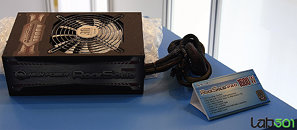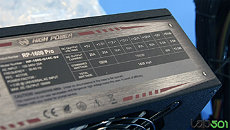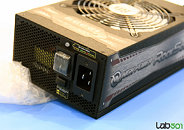GC-HCPE Power Connector Can Supply more Than 600 Watts to GPU
Twitter/X user @momomo_us has unveiled official documentation detailing a new GC-HPCE power connection standard to supply additional GPU power throughout motherboard. This connector can deliver over 600 Watts of power, surpassing 12VHPWR connector's capacity. The GC-HPCE power connector features four groups of pins. Sixteen pins are dedicated to power delivery, while the remaining twelve facilitate communication between the motherboard and the graphics card. Its size is comparable to the regular PCIe x1 connector. Positioned in alignment with the primary PCIe x16 slot on a motherboard, the GC-HPCE power connector is situated behind the x16 slot, typically where the motherboard chipset heatsink is found. This strategic placement ensures the graphics card can be easily slotted into both connectors, simplifying installation. The connector's design negates the need for an additional locking mechanism, as the x16 slot's existing lock sufficiently secures the graphics card.
First showcased at Computex, this connector was featured in several prototype motherboards and graphics cards, emphasizing its potential to enhance cable management and aesthetics. By eliminating supplementary power cables from the graphics card and channeling power through the motherboard, the graphics card's appearance remains uncluttered, and cable management behind the motherboard tray becomes more streamlined. Intriguingly, this connector is a familiar design. It's a modified version of the High Power Card Edge (HPCE) standard prevalent in the server industry. While ASUS has been the primary proponent of this connector, it remains to be seen if other companies will adopt this standard for their consumer products. Additionally, routing power throughout the motherboard will require manufacturers to include additional power regulating circuitry, potentially driving motherboard costs up. It is also not an agreed upon industry standard, which could block some future GPU upgrades from happening.You can check out ASUS'es implementation of the Back-to-Future (BTF) motherboard that supports this connector below.
First showcased at Computex, this connector was featured in several prototype motherboards and graphics cards, emphasizing its potential to enhance cable management and aesthetics. By eliminating supplementary power cables from the graphics card and channeling power through the motherboard, the graphics card's appearance remains uncluttered, and cable management behind the motherboard tray becomes more streamlined. Intriguingly, this connector is a familiar design. It's a modified version of the High Power Card Edge (HPCE) standard prevalent in the server industry. While ASUS has been the primary proponent of this connector, it remains to be seen if other companies will adopt this standard for their consumer products. Additionally, routing power throughout the motherboard will require manufacturers to include additional power regulating circuitry, potentially driving motherboard costs up. It is also not an agreed upon industry standard, which could block some future GPU upgrades from happening.You can check out ASUS'es implementation of the Back-to-Future (BTF) motherboard that supports this connector below.












